Article Contributed by L. Paul Mann
Published on October 8, 2025
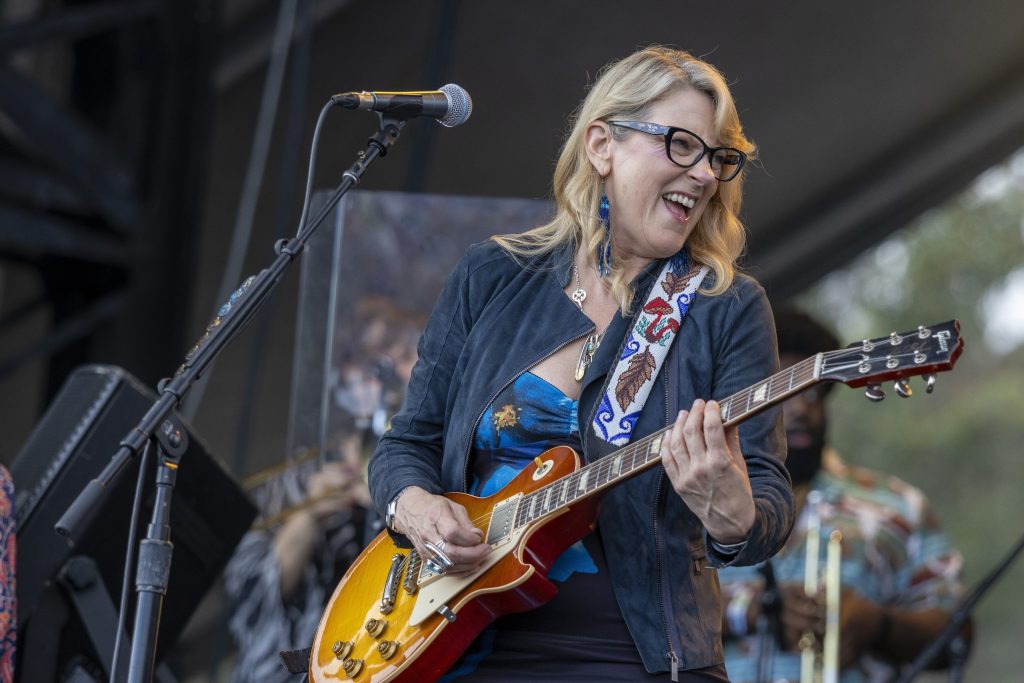
Friday, September 27th, dawned bright and sunny. Tropical clouds from Hurricane Narda dissipated along the Southern California coast as the second day of the Ohana Festival began. On Doheny Beach below the festival, surfers gathered, ready for the new swell spawned by Narda’s remnants.
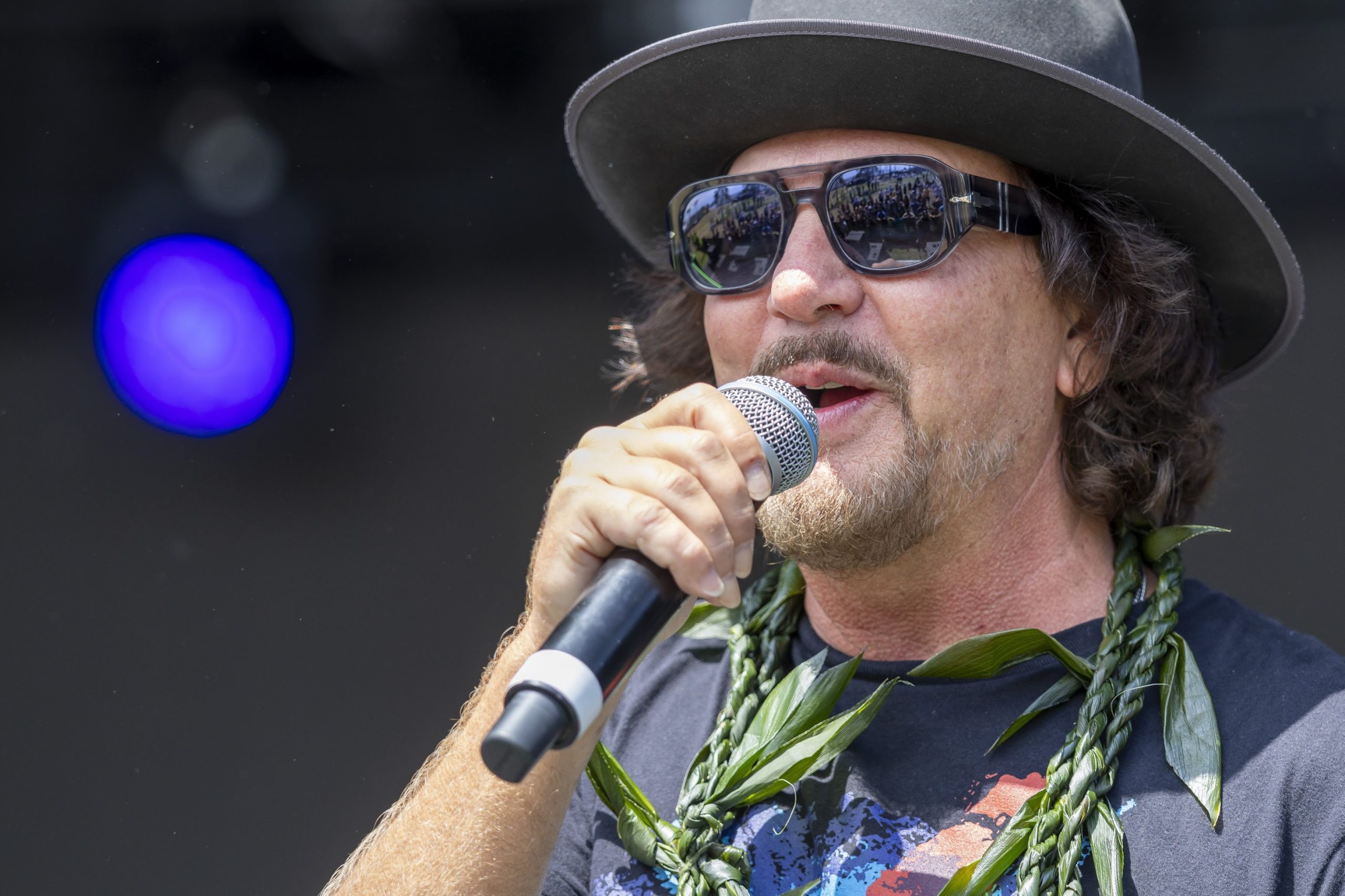
Just after noon, as the California sun rose above Doheny State Beach, a bleary-eyed Eddie Vedder strolled onstage to greet the early birds. The Ohana Festival founder and Friday night headliner looked more surfer than rock star, coffee in hand, grinning through his fatigue. He admitted he’d been up most of the night after his Earthlings set—hanging out on the beach with friends, watching the waves, unable to sleep. “Normally I’d still be in bed after a show,” he laughed. “But I had too much adrenaline from all of this.”
With that, he turned to the crowd and introduced the festival’s first act of Day 2 — The Alain Johannes Band.
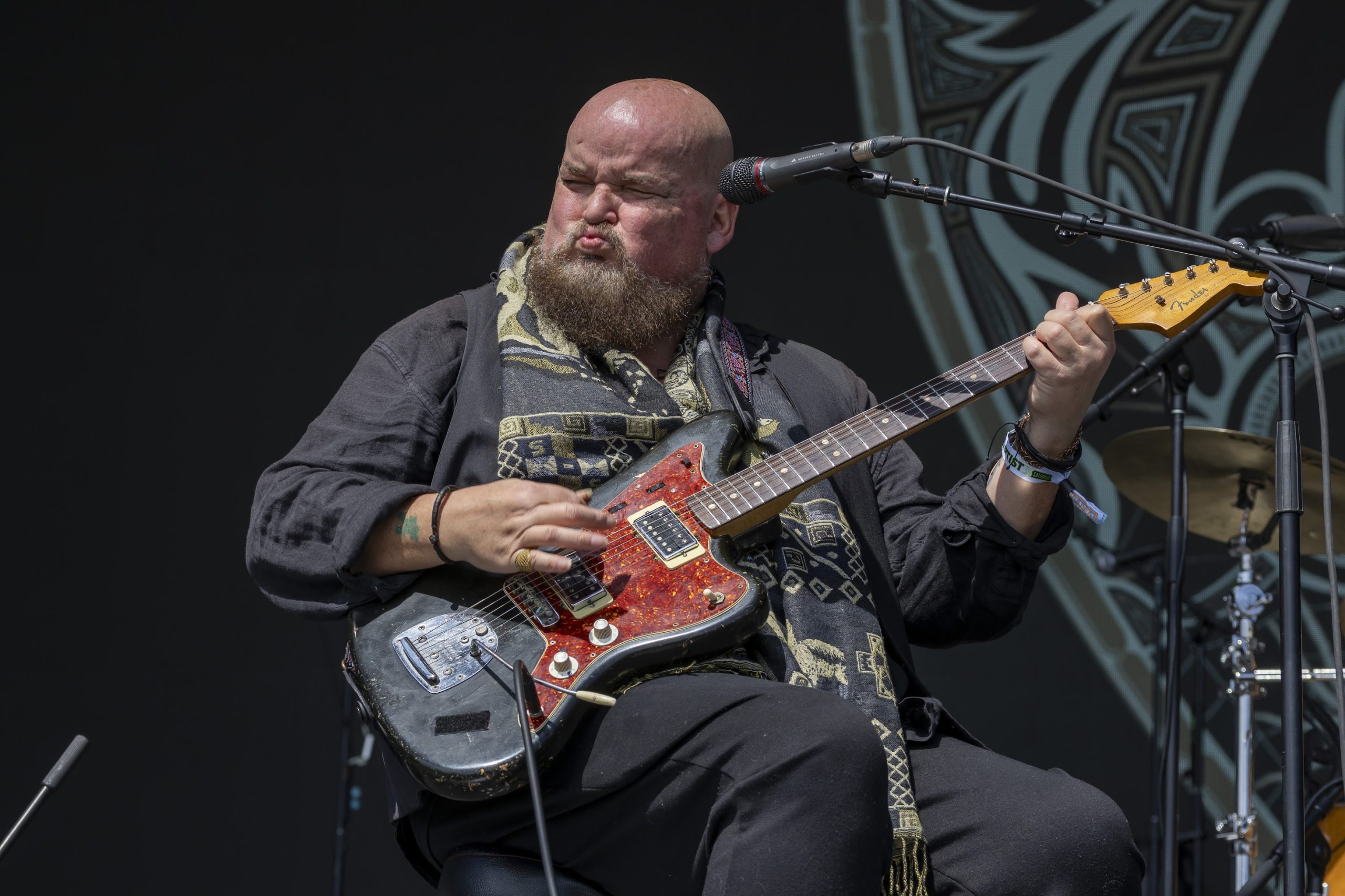
Johannes, a Chilean-American multi-instrumentalist and vocalist, stepped onto the stage with quiet poise. Known as one of rock’s hidden architects, he has spent decades shaping the sound of modern alternative and desert rock. His fingerprints are everywhere—from the molten riffage of Queens of the Stone Age and Them Crooked Vultures, to work with PJ Harvey, Chris Cornell, Arctic Monkeys, Mark Lanegan, and the experimental collective The Desert Sessions. But this set, opening the second day of Ohana 2025, was all his.
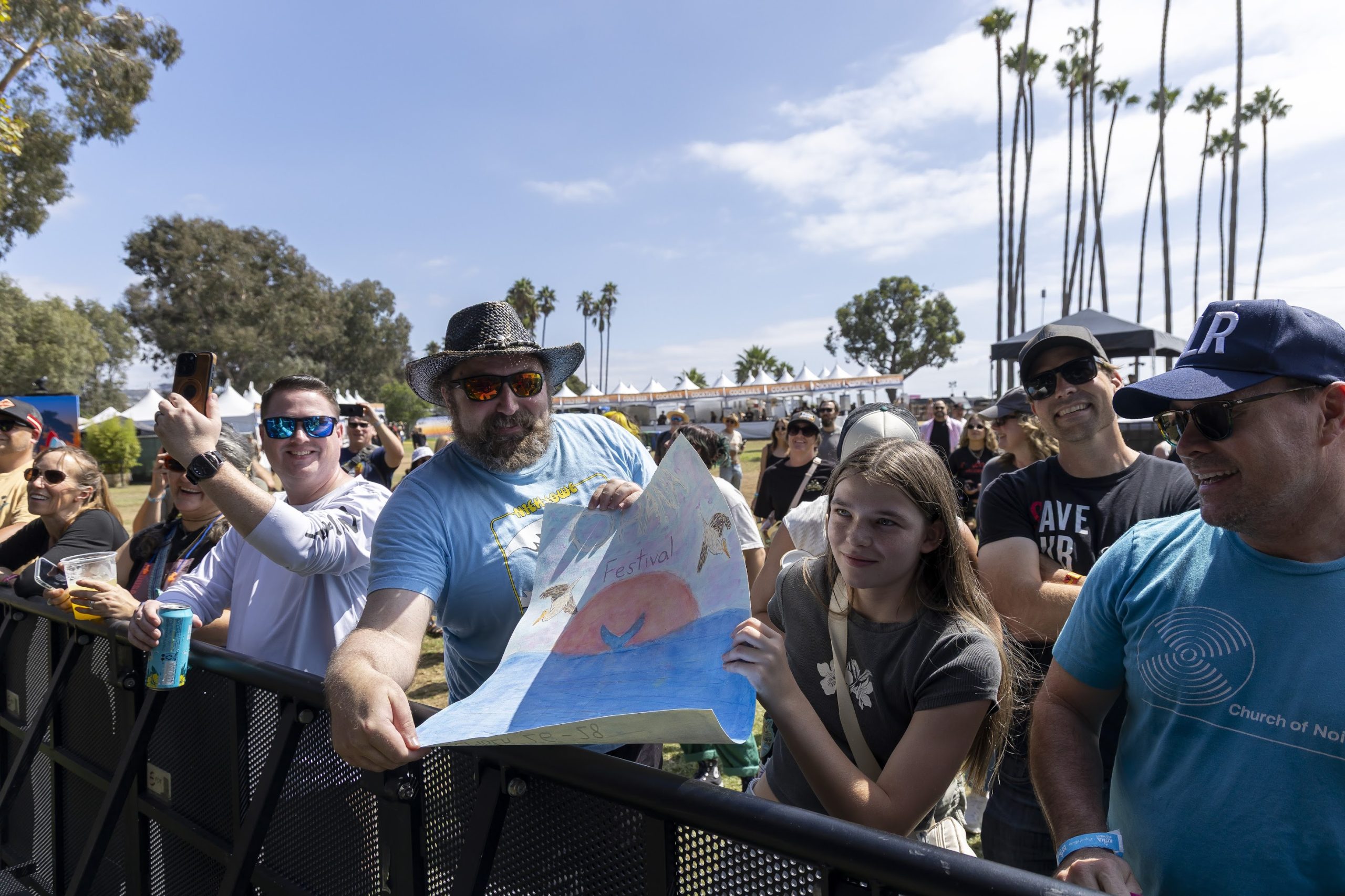
Backed by a sharp band, Johannes opened with “Hanging Tree,” a moody, slow-burning song that captivated the sunlit crowd. His guitar—fluid, jagged, always narrative—carried a signature desert resonance, both intimate and wide, like wind and stone. The rhythm section didn’t just keep time; they echoed and countered each phrase in an unspoken dialogue.
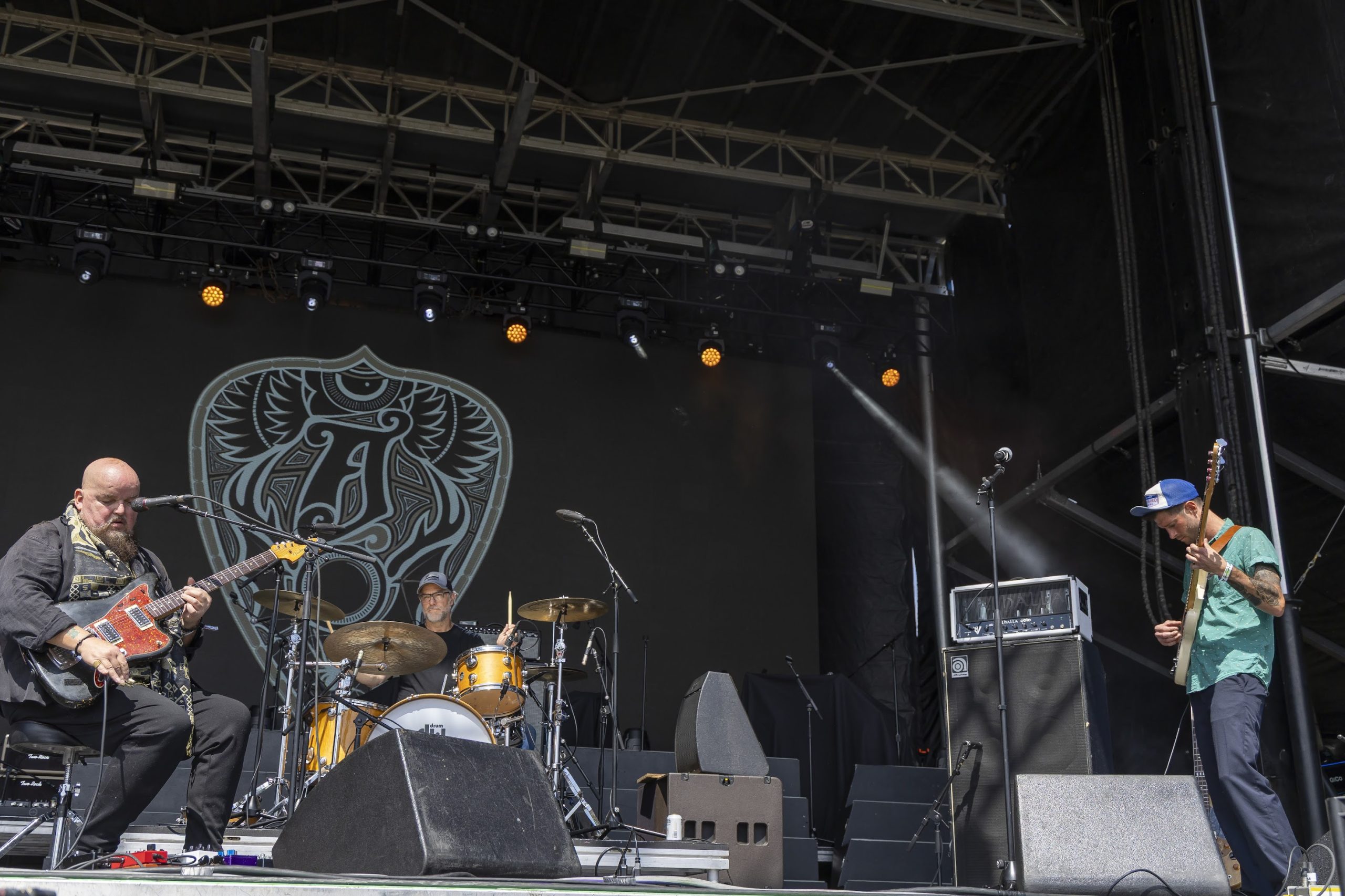
Each song felt like a journey. In the studio, a track might be concise, but onstage, it stretched and evolved. Music flowed through natural crescendos and gentle decays. Letting his riffs linger in the open air, Johannes allowed the coastal breeze to mingle with the music. At times, it seemed as if the Pacific itself was part of the band. The set moved with ease through his catalog: from the meditative pulse of “Why?!” to the spectral shimmer of “Ava Tar.” Though rooted in rock, his music carried a spiritual undertone. He is a man who’s seen the inside of every great collaboration, yet remains fiercely his own artist.
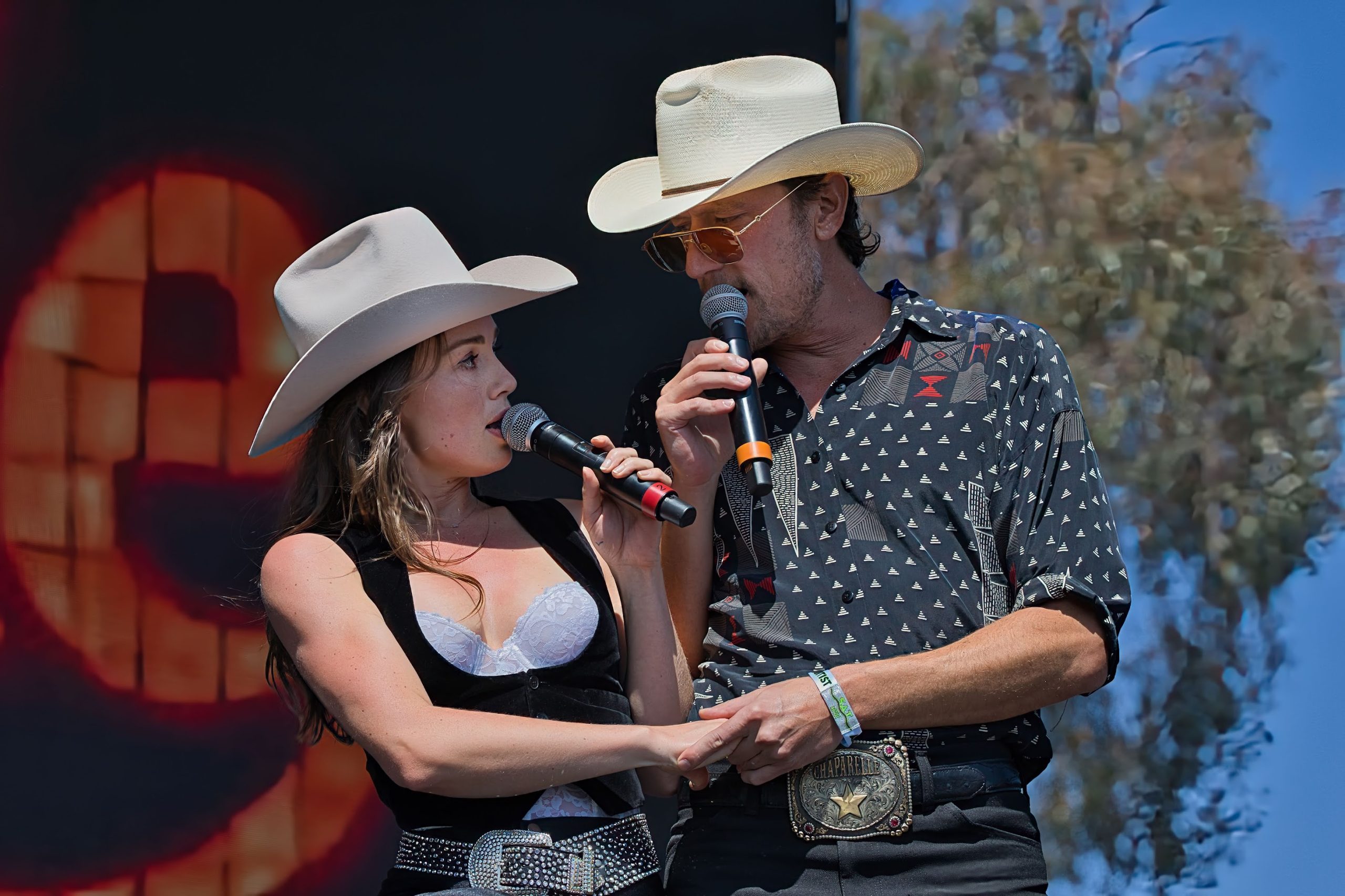
On Day 2 of Ohana, the sun was sharp, the waves steady, and the vibe mellow—ideal conditions for Chaparelle, a new, magnetic presence on the Americana scene that brought a fresh direction for the day’s second set.
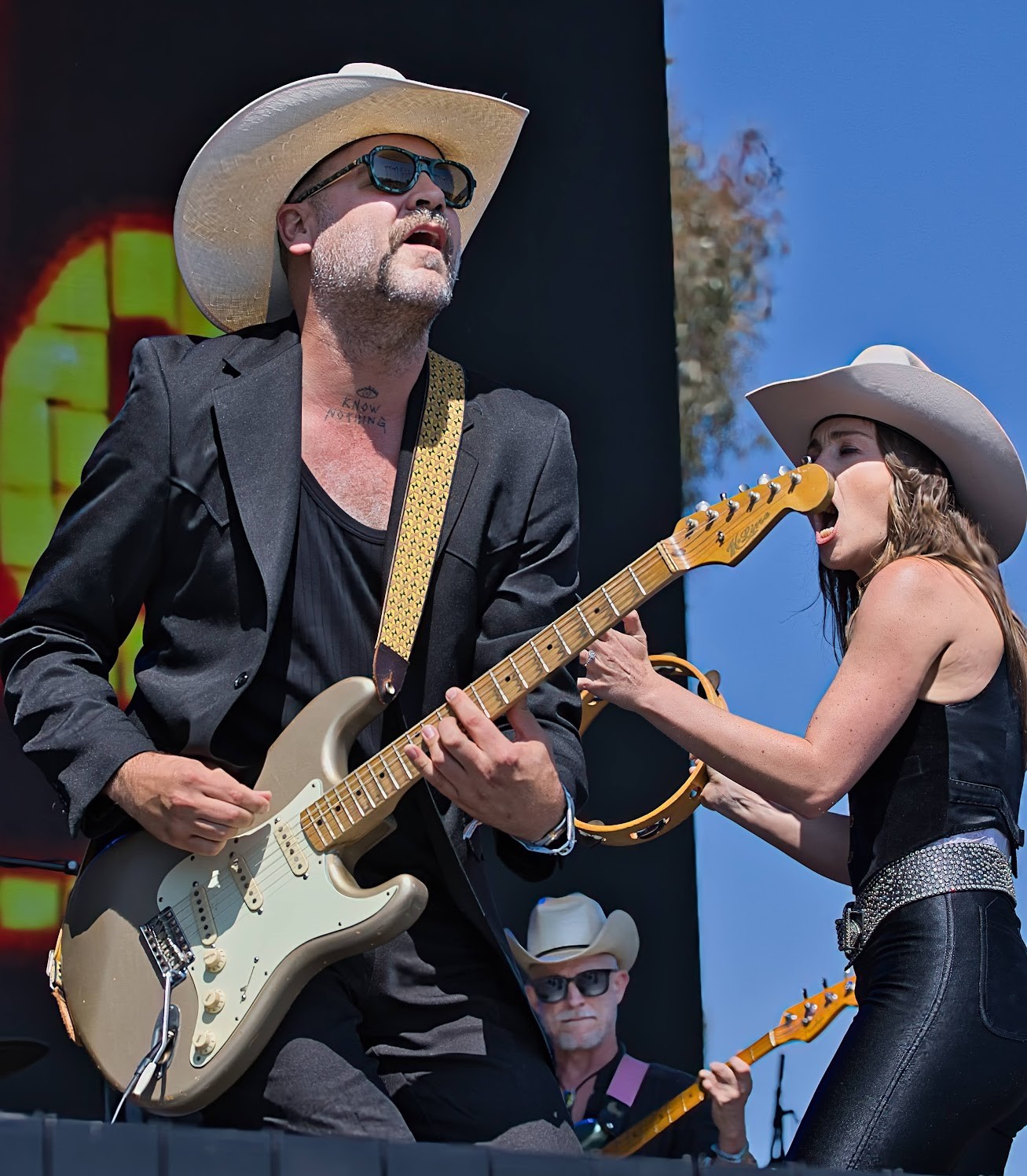
A “country-folk supergroup,” Chaparelle is made up of indie-folk troubadour Jesse Woods, indie-pop enchantress Zella Day, and Beau Bedford. Bedford, a Dallas producer-turned-full-time band member, is known for shaping the Texas soul collective The Texas Gentlemen. Together, the trio has found a sound that feels both nostalgic and fresh—a dusty, harmony-laden revival of the golden era of country duets.
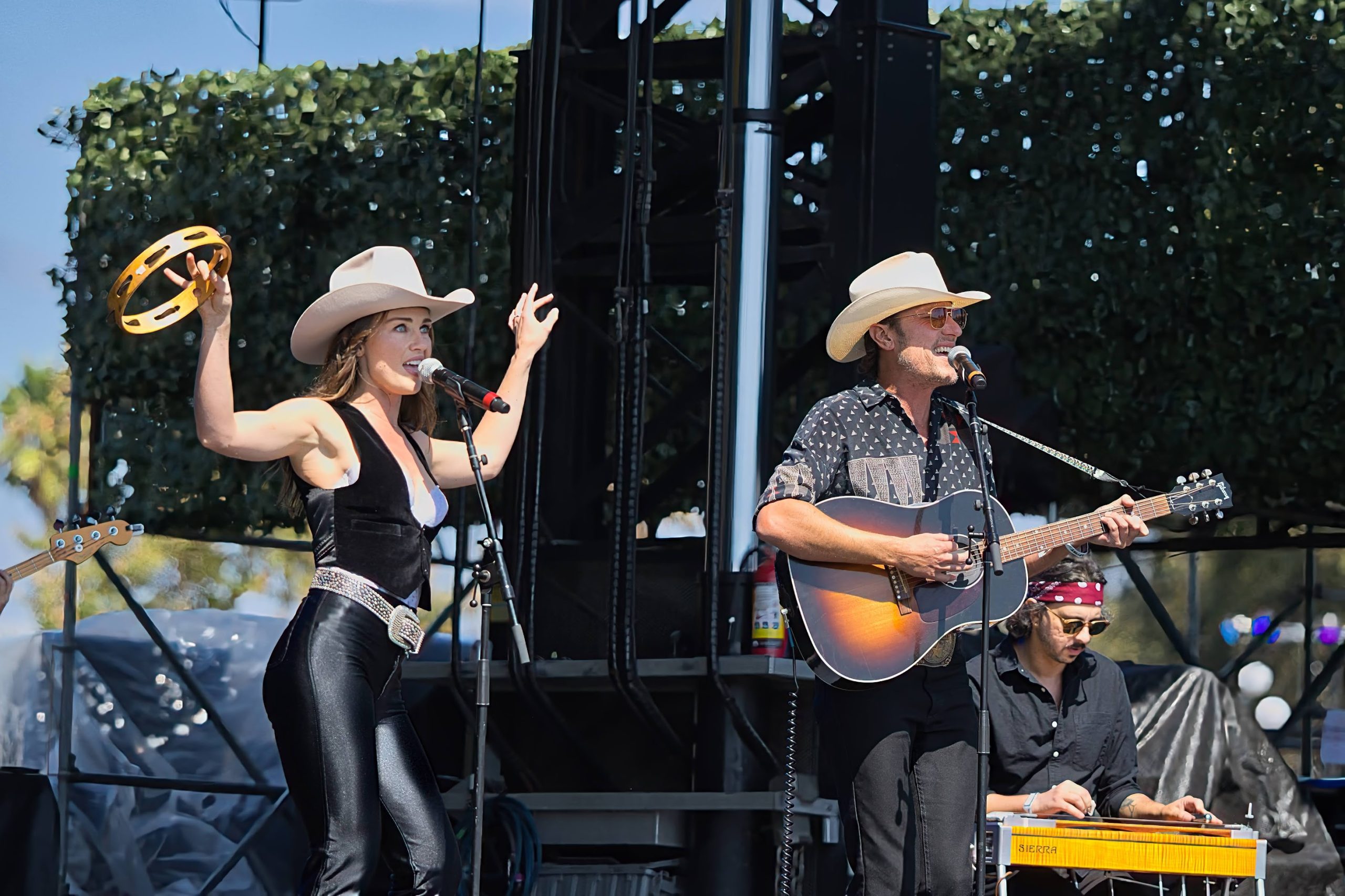
Their songs felt like postcards from another time—equal parts Gram Parsons and Emmylou Harris, George and Tammy, with a dash of Laurel Canyon cool. On tunes like “Midnight Cowboy” and “Lover’s Bluff,” they leaned into the ache and playfulness of classic country storytelling, giving the modern crowd something both familiar and unexpected. When they performed “The Wind Will Come,” a slow, aching ballad led by Zella, the beach seemed to still. Her voice rose above the ocean breeze like a lonesome radio signal from decades past.
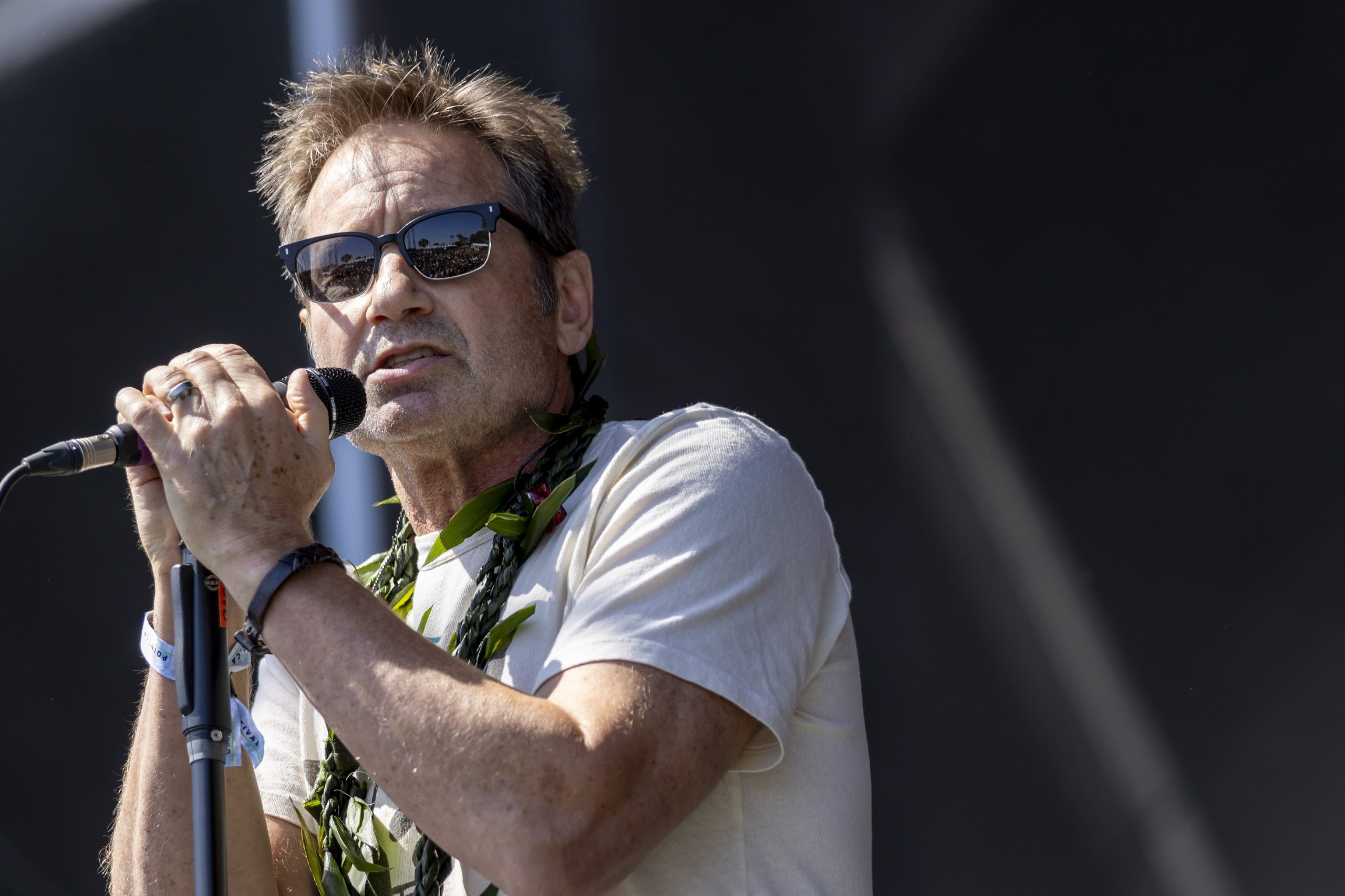
The next set featured the David Duchovny Band—yes, that David Duchovny. In a festival full of musicians, his performance was an intriguing surprise, underscoring Ohana’s willingness to break expectations and keep the day open to possibility.
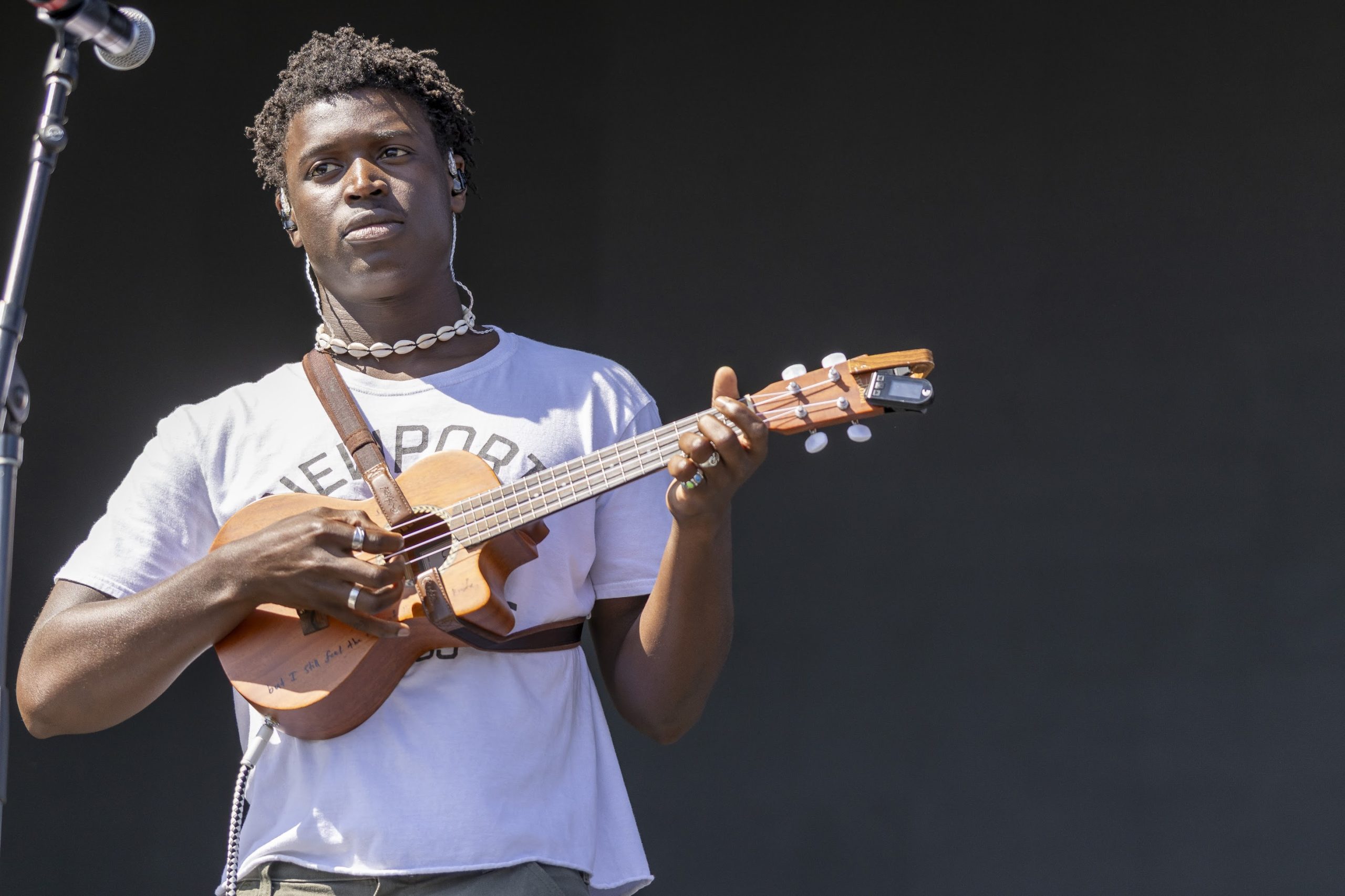
As the early afternoon tide rolled gently against the shore at Doheny State Beach, the air seemed to hush for a moment. The chatter softened, the sun slipped behind a passing cloud, and Mon Rovîa stepped onto the stage—a quiet, commanding figure whose music would soon transform the beach into something more sacred than festive.
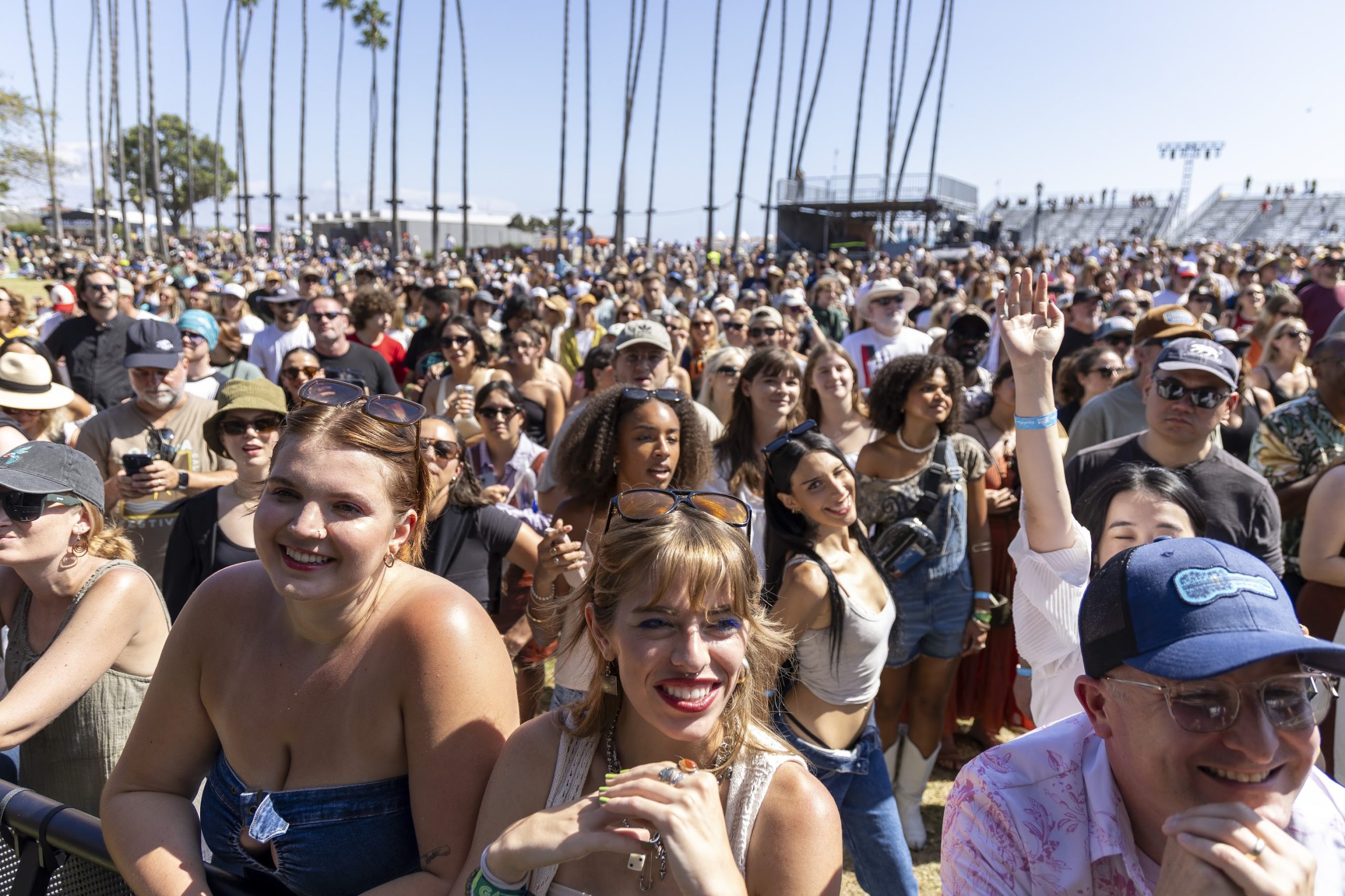
A Tennessee-based artist, Mon Rovîa blends West African rhythms with Appalachian folk traditions, creating a sound that feels both ancient and entirely new. Bridging continents and generations, his music acts as a sonic dialogue between his heritage and the land he calls home. Hand percussion met banjo, while kora-like guitar lines wove through ghostly Americana melodies.
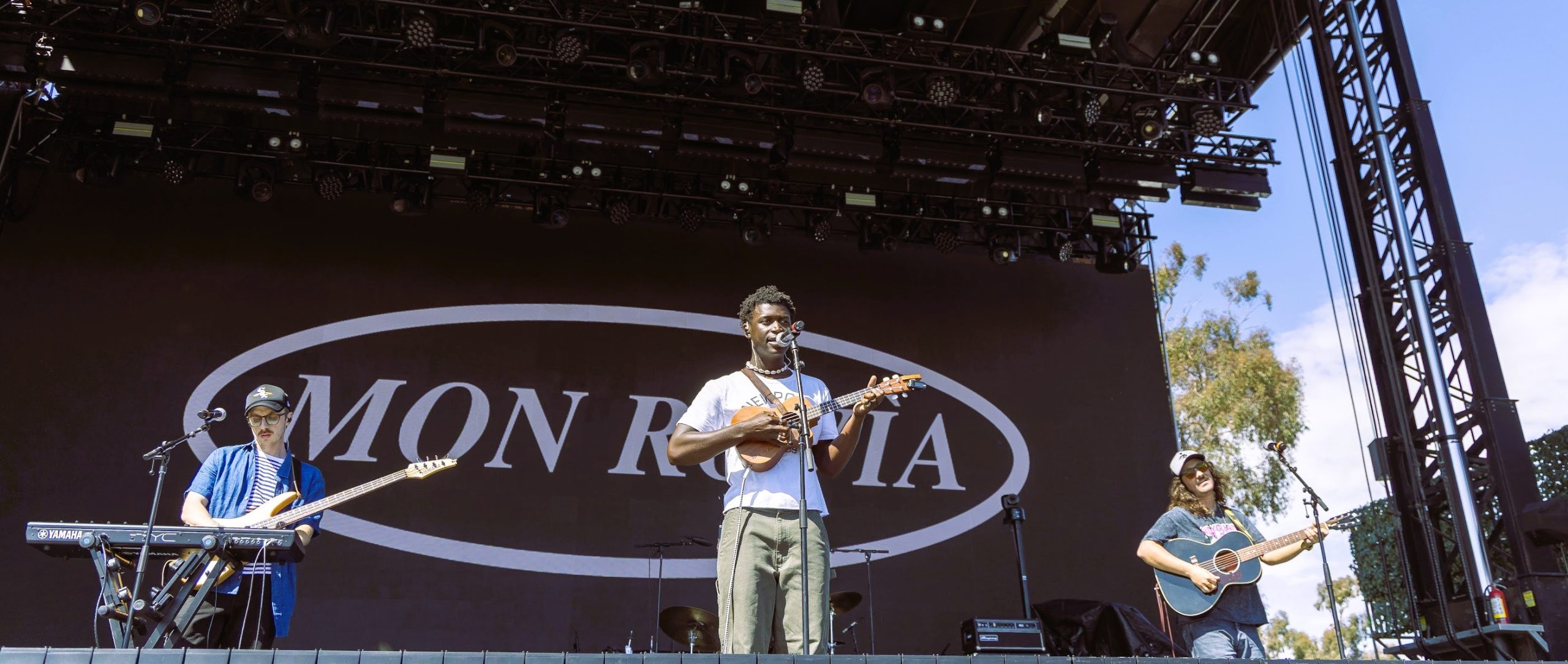
Opening with a slow, meditative piece highlighting his fingerpicking, Mon Rovîa drew listeners in with his stillness. His low, resonant voice carried the intimacy of a storyteller by a fire, with lyrics that spoke to home, belonging, and time. Songs like “Ashes of the River” and “Low Country Hymn” revealed his deep connection to both spiritual and physical landscapes.
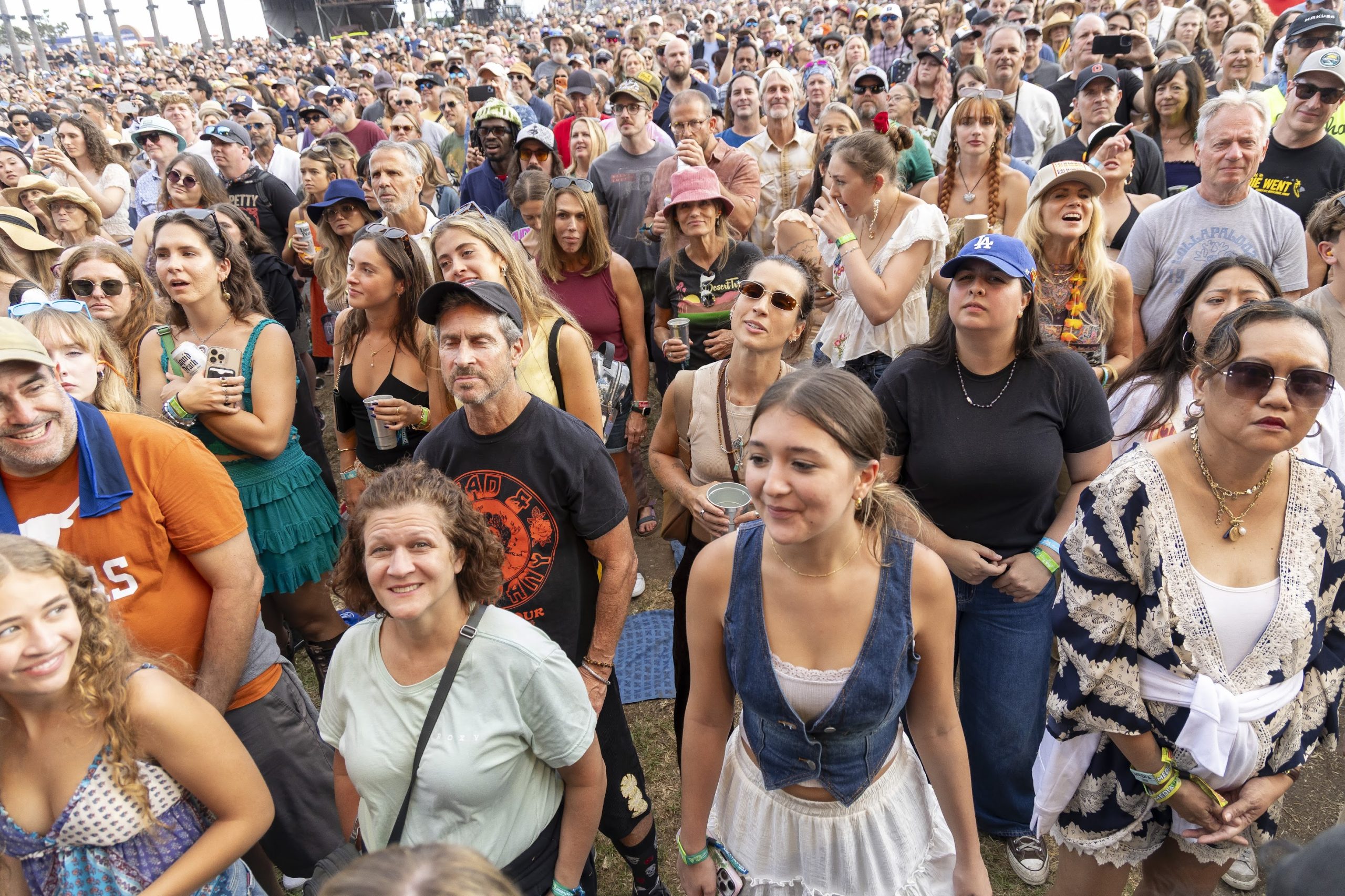
Midway through, he introduced a song inspired by his grandmother’s stories of migration and resilience. It built slowly from sparse chords into a layered, percussive groove, trance-like in its effect. The fusion wasn’t gimmickry—it was reverence. Djembe, violin, and upright bass merged into a sound that felt borderless, while the audience swayed in collective meditation.
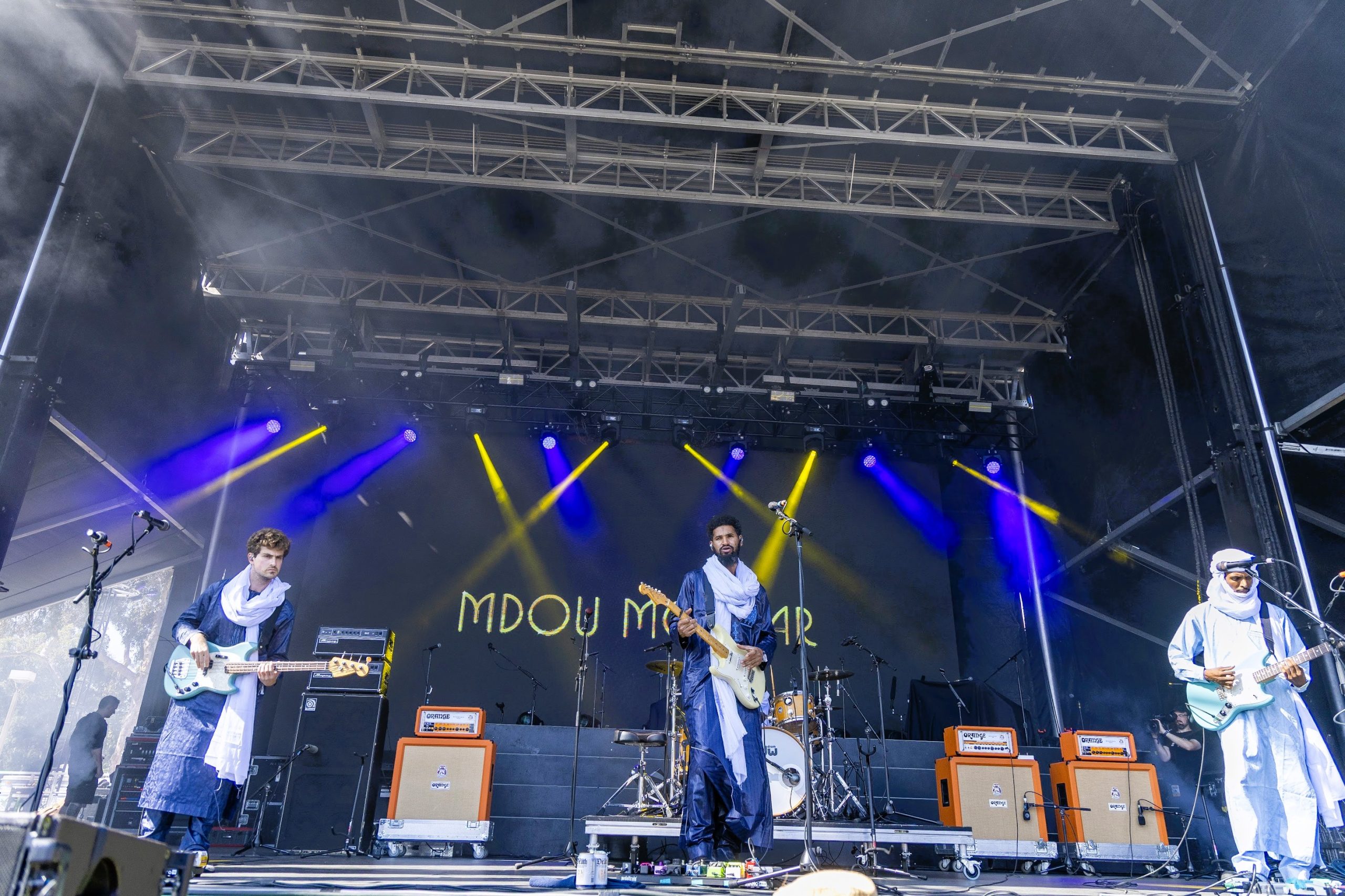
As the sun began its late-afternoon descent, Mdou Moctar and his band delivered one of the festival’s most electrifying performances. The Nigerien guitarist, singer, and songwriter strode onto the stage in his signature flowing tunic, and the energy shifted. His Tuareg desert blues erupted like a desert storm of sound—fierce, hypnotic, and deeply spiritual.
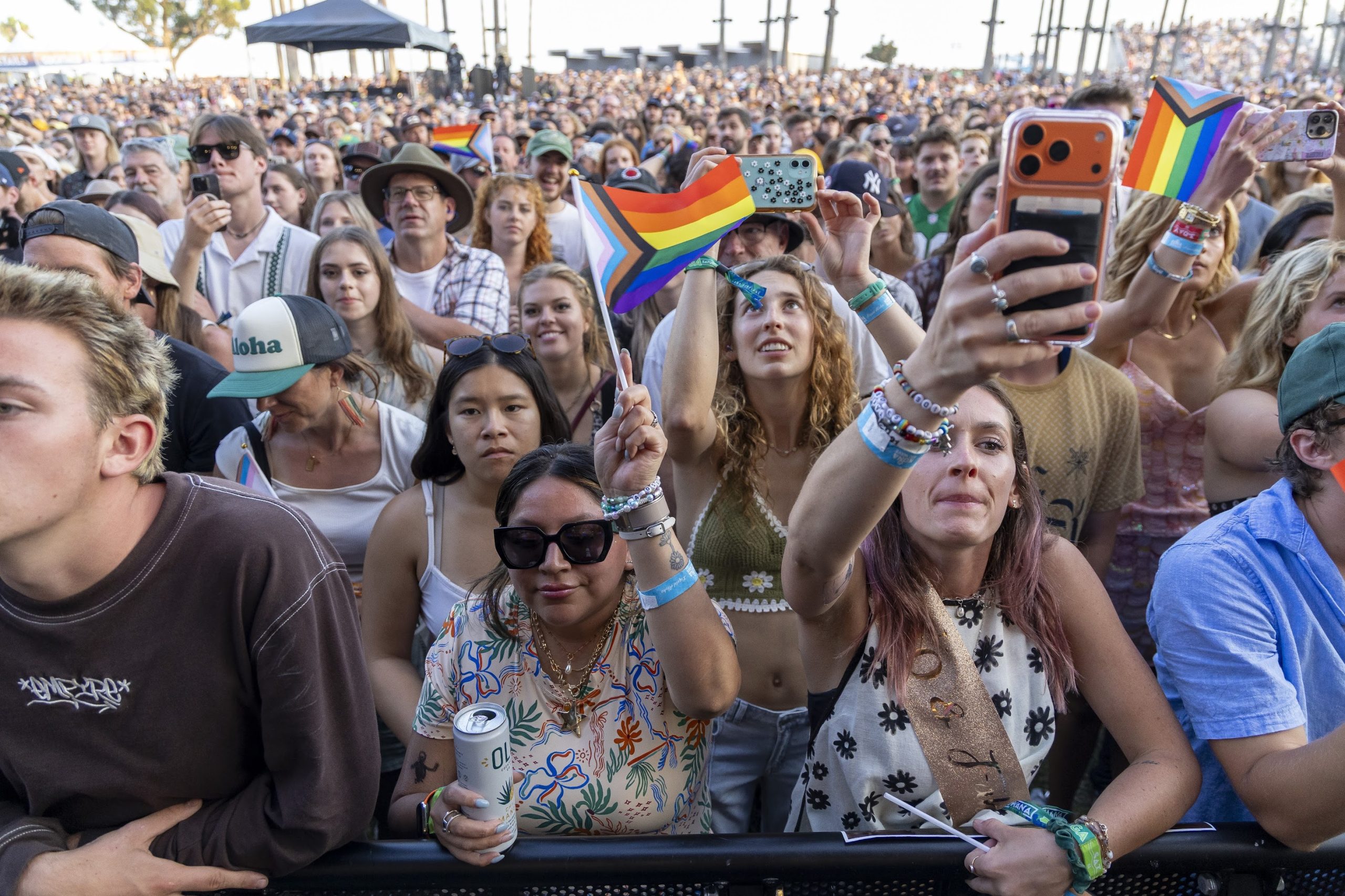
From the first note, Moctar’s guitar tone burned like sunlight through desert heat: bright, distorted, fluid, and cyclical. His quartet locked in with him—drums pulsing polyrhythms, bass thundering, rhythm guitar providing trance-like grounding. Even without understanding the Tamasheq lyrics, the crowd felt the music’s urgency: stories of freedom, migration, and resistance.
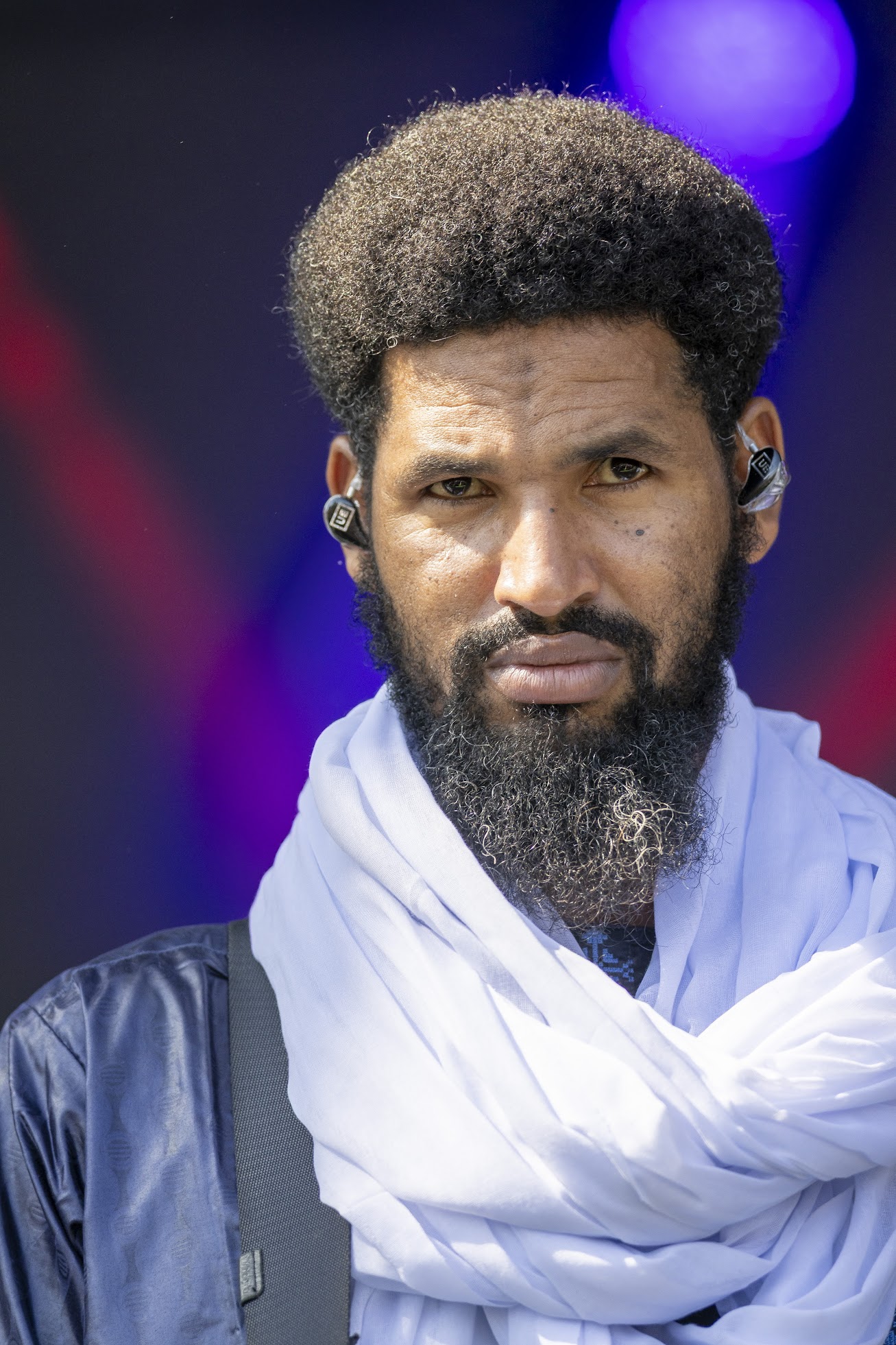
Midway through, Moctar unleashed a solo that blurred the line between psychedelia, blues, and Saharan tradition. For the finale, a swirling jam, strangers danced barefoot in the sand as the beach became a desert celebration.

As afternoon haze settled, Margo Price brought Nashville swagger and outlaw soul. Dressed in a glimmering western suit, she tore into “I Just Don’t Give a Damn” and never looked back. Backed by her long-time band and husband Jeremy Ivey, she fused country rock, psychedelic twang, and political folk. By the time she closed with Dylan’s “Maggie’s Farm,” the Pacific sunset framed her defiant voice.
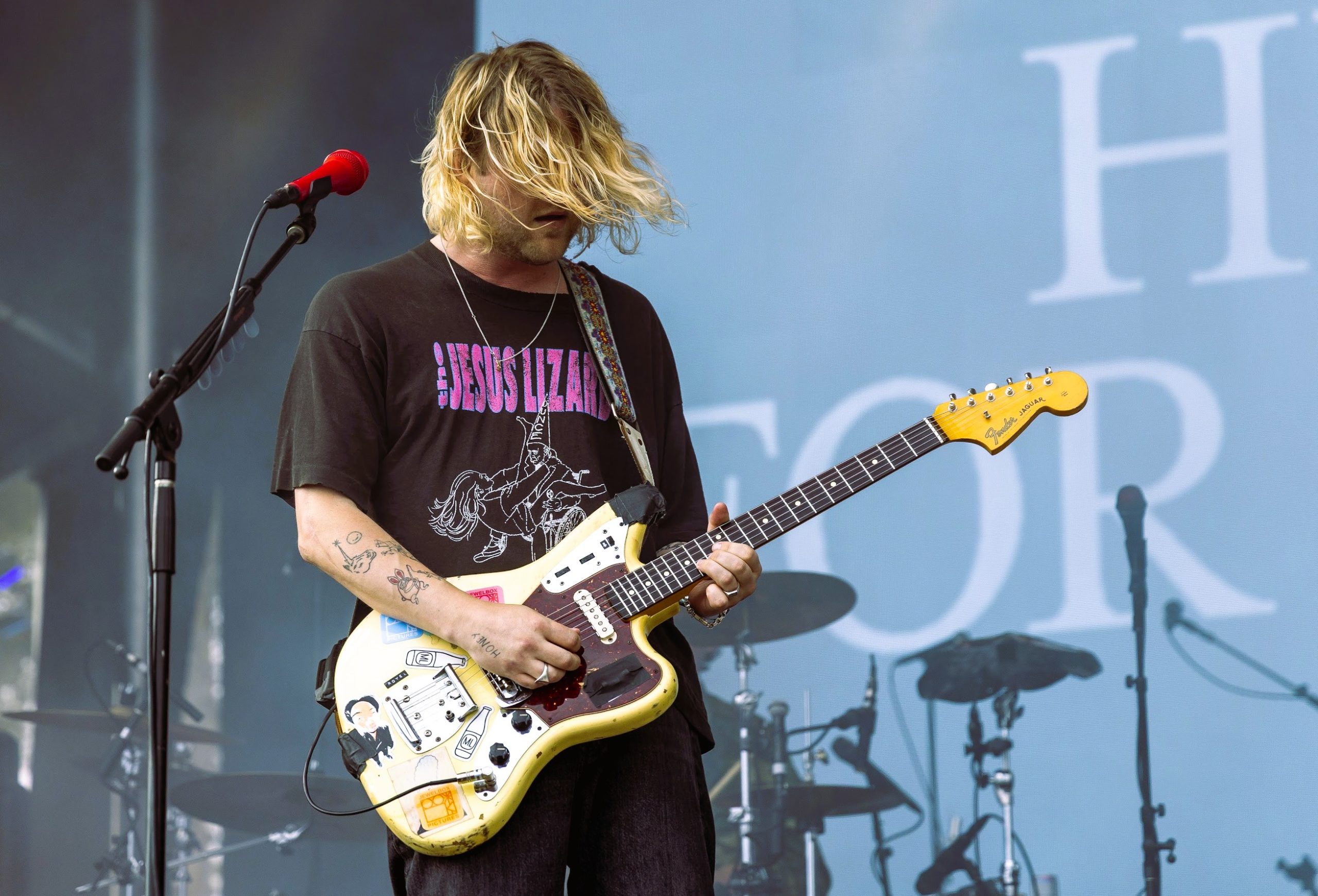
Royal Otis followed, shimmering indie pop perfectly suited for ocean air. The Sydney duo turned the crowd into a sunlit dreamscape with jangly guitars, hazy vocals, and blissful grooves. “Sofa King” lit up the beach with barefoot dancing, while “Matsudo City Dreaming” closed the set in golden-hour glow.
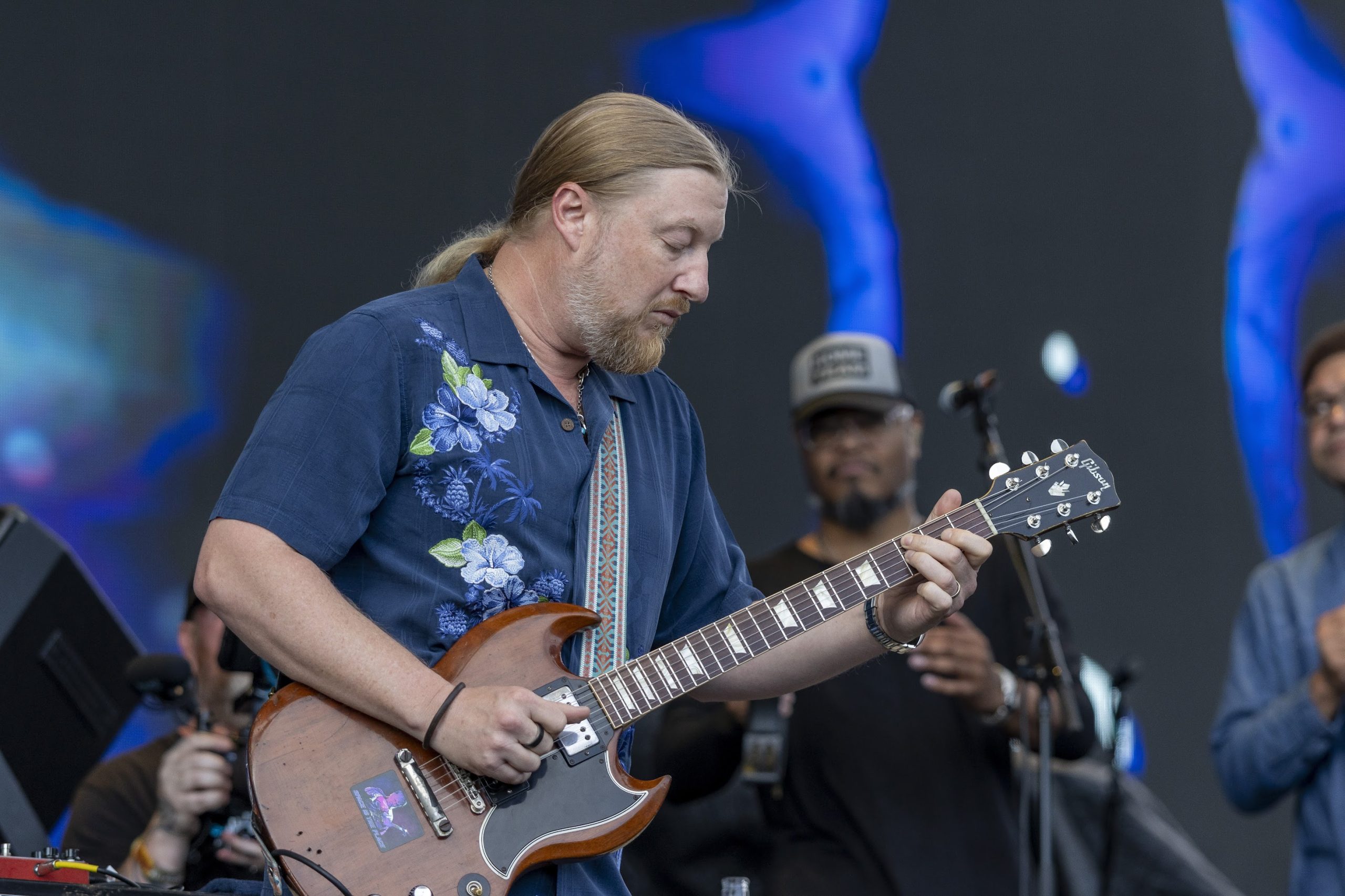

Tedeschi Trucks Band then delivered a masterclass in soul, blues, and spiritual fire. Susan Tedeschi’s velvet-and-flame vocals met Derek Trucks’ glassy slide sermons. Together, with their 12-piece band, they filled Doheny Beach with gospel-soaked southern rock. Eddie Vedder joined them for The Who’s “The Seeker,” an intimate, electrifying collaboration.

Rainbow Kitten Surprise turned the festival into a cathedral of sound, Ela Melo’s dynamic vocals carrying stories of resilience and love across the sand. Fans waved rainbow flags as the band leapt from foot-stompers like “Goodnight Chicago” to intimate songs like “Hide,” closing with “It’s Called: Freefall” in a wave of emotional catharsis.
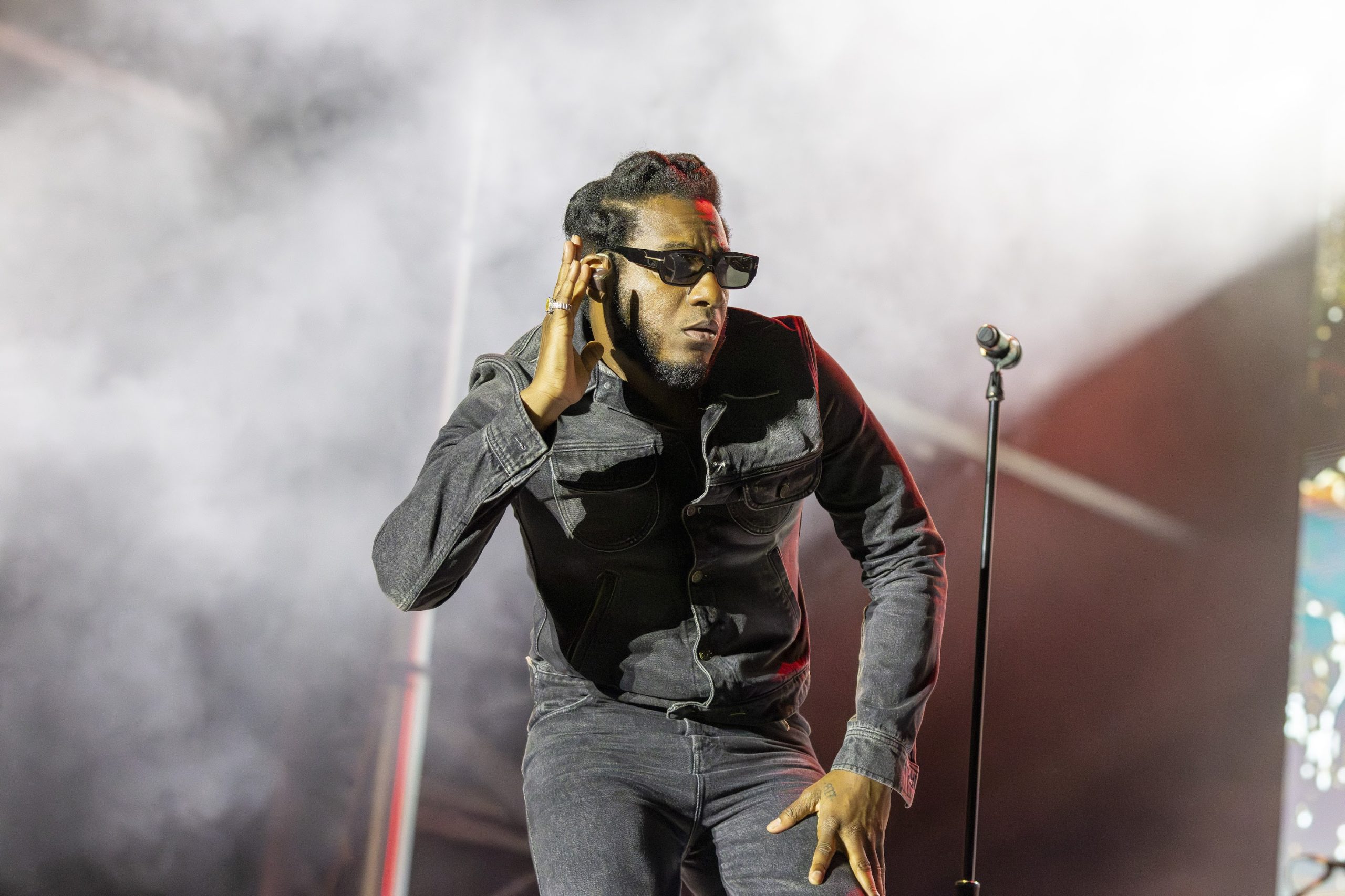
As twilight deepened, Leon Bridges brought soulful warmth, his velvet voice gliding through “Texas Sun” and “Beyond.” His easy anecdotes made the festival grounds feel intimate, setting the stage for the night’s headliner.
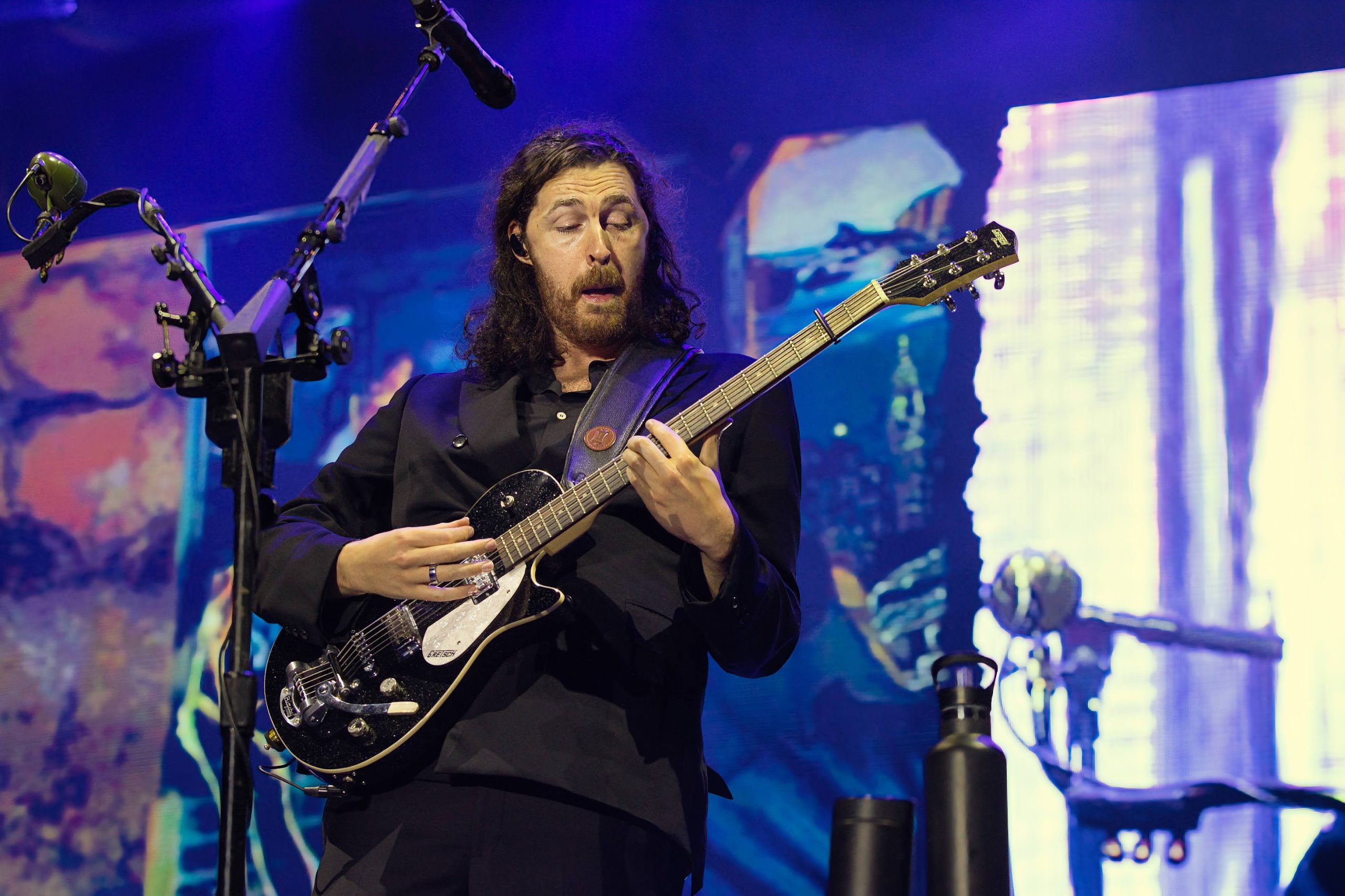
Hozier closed Day Two with a performance that felt near-sacred. From “Nobody’s Soldier” to “Take Me to Church,” his poetic intensity captivated the crowd. In quieter songs like “Cherry Wine,” even the Pacific seemed to hush. Day two ended not with spectacle, but with reverence—Hozier reminding all that music is both balm and beacon, a light that lingers long after the stage goes dark.